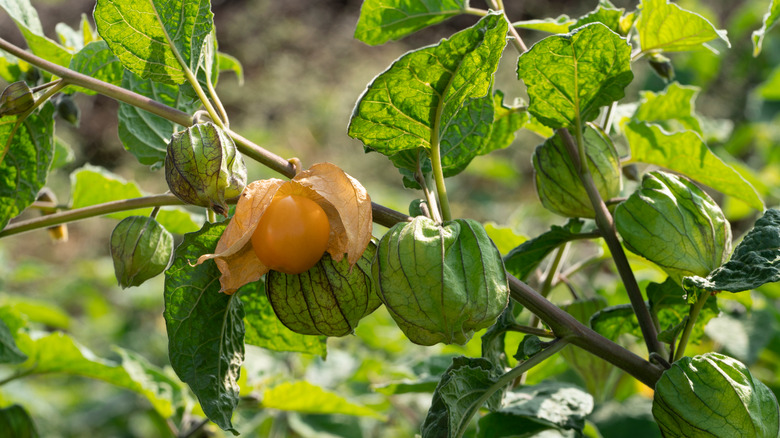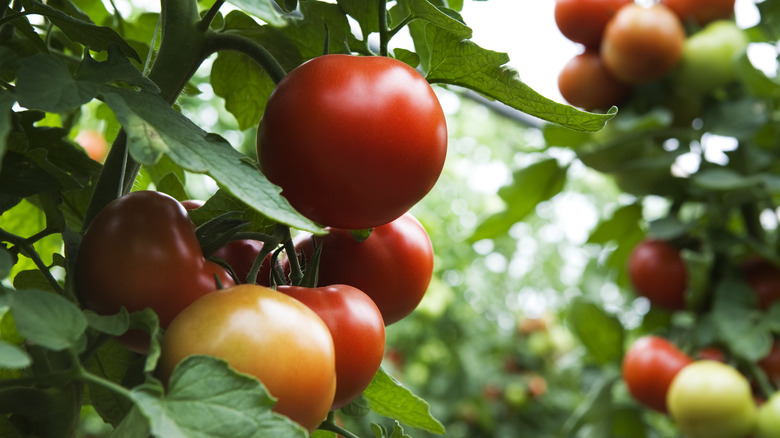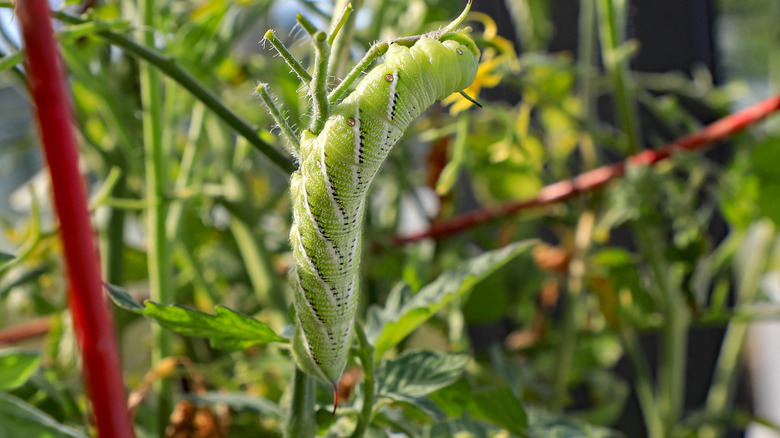Why You Shouldn't Plant Ground Cherries Next To Tomatoes In The Garden
Many backyard gardeners love growing tomatoes because they reward hard work with baskets full of juicy fruits. Finding a reliable companion for them can be a bit difficult, though, as tomatoes can quickly grow out of control and take up a lot of space. Ground cherries are one plant you definitely don't want to grow close to your tomatoes because they can also take up a lot of space.
The ground cherry, Physalis pruinosa, goes by many names, like husk cherry, strawberry tomato, and Cape gooseberry. There are over 75 species, and they taste something like a tomato crossed with tropical fruit. They may seem exotic to grocery store shoppers, but they're actually native to the Americas and are great to grow for local pollinators in your yard. Though they're more common in backyards than naturalized areas these days, they can develop a weedy growth habit in sandy soils or in forests and woodlands.
These "cherries" are tomato relatives in the nightshade family. They're prone to the same pests and diseases, so keeping them in close quarters will be like having a house full of kids — if one gets sick, they all do. Rather than being a convenient growing companion, they'll also compete with your tomato plants for resources, which you don't want.
Tomatoes and ground cherries will compete for their needs
You'll find that ground cherries have a lot of the same requirements as other nightshade vegetables. Though each plant species has its unique needs, ground cherries need a lot of sunlight and water just like its tomato cousin. Moist soil is a must for prolific fruiting for both plants, too. If tomatoes and ground cherries have to compete for water and nutrients, you may find that one or both plants will become stunted or produce fewer fruits. If one plant becomes bigger, a growth spurt will cause it to cast too much shade over the other.
Balancing nutrients for two similar plants can be difficult. You may feel compelled to provide them with more fertilizer than usual, but doing so can present its own problems. Too much nitrogen will make foliage flourish but reduce fruit production. You'll be left with large bushes and a meager fruit haul. By keeping tomatoes and ground cherries in separate beds and pairing each with less competitive companions, you'll reduce the risk of overfertilizing.
Ground cherry pests also go after tomatoes
A garden with one tomato plant can easily be decimated by a few pests, like the dreaded tomato hornworm. The only upside if you're dealing with a green hornworm infestation is that they're limited to your tomatoes. However, if there are multiple plants they can feed on, more tomato hornworms can continue feasting and the population will flourish. When tomatoes and ground cherries are planted together, pests will have an all-you-can-eat buffet, because the two plants share the same pests. Cutworms, Colorado potato beetles, aphids, and stink bugs are common pests among tomatoes and ground cherries that will hop from plant to plant if they're within reach.
Diseases can also spread between plant species since they're in the same family. Early blight and verticillium wilt are some of the diseases the two plants have in common, both of which are fungal diseases that can be spread among plants. The diseases can be spread by seed and water, so if you introduce an infected plant to your garden, splashes of water can spread the fungal diseases and ruin the fruit production of both ground cherries and tomatoes.


